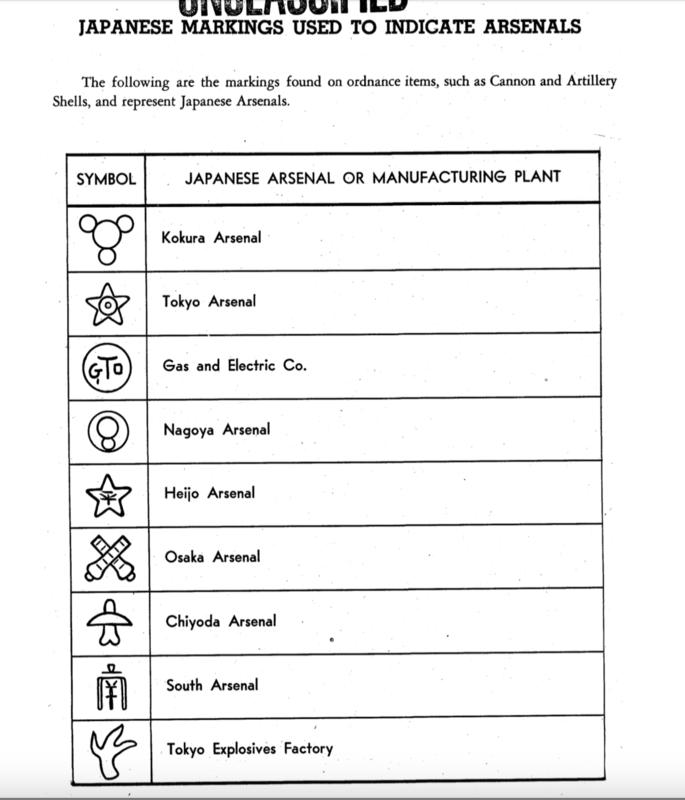
John C
Members-
Posts
2,210 -
Joined
-
Last visited
-
Days Won
15
Everything posted by John C
-
That could be. We may never know without definitive documentation. Hot cutting the nakago of pre-existing blades makes sense because the limited time they had to fill the orders after the red tape would have necessitated the need-for-speed. John C.
-
Fun With My Late War Nco Gunto
John C replied to Bruce Pennington's topic in Military Swords of Japan
These are a bit like hens teeth. They're out there, but you'll pay up for them. You may want to buy replacement copies for now until you come across a reasonably priced real one. You could also use a bamboo mekugi in the mean time. John C. -
John: You might be able to answer this - are the handles on the souvenirs slightly shorter than a regular gunto? I was thinking that if so, it could explain why the nakago on the blades were so abruptly cut in order to fit the souvenir. John C.
-
habaki serial numbers - parade kuy / kai gunto
John C replied to Suci's topic in Military Swords of Japan
I'll probably get corrected on this, however I think most parade / dress swords did not have habaki. There were some type 8 kyu-gunto riding swords and artillery swords that had serial numbers and other stamps on the ricasso. There were also general grade swords that had the rising sun on the habaki. Maybe someone else can find a more specific example. John C. -
-
Gerry: In one sense, it could be a good (or at least interesting) thing as it adds to the provenance. As the next caretaker of the sword, you could start an ownership chart. If the quality were excellent, I would have no problem with it. Indeed, all of my swords have been owned by someone else! John C.
-
-
...again not sword related, however may be useful as a reference tool. A list of marks from various ordinances. John C.
-
@Bruce Pennington Here is some stamp related info you may find interesting, though not related to swords. Note the comments on the origin of the Nagoya mark (you may already know this) and the comments on the Japanese not liking serial numbers over 5 digits (99,999) so they used katakana letters to denote new series. http://www.nambuworld.com/t14markings.htm John C.
-
I wasn't sure because I thought naval ships used case-less ammo and I couldn't think of an artillery piece that would fire something that big. The largest howitzer shell we used was a 240mm, which I think is smaller than that can. John C.
-
-
Is that bucket made from a large artillery shell? Anzio Annie perhaps? John C.
-
An interesting looking saya with embellishments
John C replied to KB1107's topic in General Nihonto Related Discussion
I believe the lacquering technique here, is called kawari-nuri. All manner of things (particularly bits of abalone shell) could be used. Could yours be a type of sliced shell? I also think the tsuba may be horn. John C. -
...and we worry about scratching the darn things. John C.
-
Rob: Kanetoshi was an RJT smith, meaning some of his blades were hand made using tamahagane steel (we call these gendaito). Under a loupe or magnifier, does this mark look like a star shape? John C.
-
The pierced tsuba could indicate it is a type 94. Type 94/98 swords were carried by officers. As to value, it would depend on the overall condition and the expertise of the sword smith (we need pics of the tang - both sides and any stamps). John C.
-
Tang doesn't have the second mekugiana either. Note that it isn't crudely cut like most. Could that be the reason for the lack of sarute hole and barrel? Seems as if it were intentional, for some reason. John C.
-
There are no known documents that explain exactly how the control numbers were used. Theories include: numbers relating to parts bins; numbers used by the assemblers to keep parts organized (each sword is slightly different); part numbers relating to the assembler rather than the assembly (possibly for piece-work pay purposes); and sequential numbers used for accounting purposes. There are some data which show patterns (e.g., the Mantetsu and the souvenir sword studies), however nothing official has been found. John C.
-
Ron: Just FYI, the "hot stamp" on the end of the tang is called a kokuin. The one on your blade was used frequently by Kanezane as kind of a trademark. John C.
-
Tenshozan Navy Dirk Souvenirs
John C replied to Bruce Pennington's topic in Military Swords of Japan
The pic helps. I believe the Japan Sword Shop once sold replicas that were similar in style, however I have not been able to find a pic of one to confirm. John C. -
old news paper cutting of a sword shop
John C replied to lonely panet's topic in Translation Assistance
According to google app, the top pic describes the maker, style, and other details of the pictured tsuba. The large logo on the bottom right may be Nihonbashi Takashimaya, with store hours. John C. -
Tenshozan Navy Dirk Souvenirs
John C replied to Bruce Pennington's topic in Military Swords of Japan
This probably won't help (as usual), however my 3 (two marked Nakano shoten, one marked Suya shoten) seem to have the same metal fittings, etc. The only measurable difference is the Suya marked one has a heavier, chromed blade than the two Nakano brushed steel blades. John C. -
Nice star stamped gendaito, which are often found in RS mounts. It looks as if it has two chuso release buttons. This particular set-up often had decent blades in them. John C.









